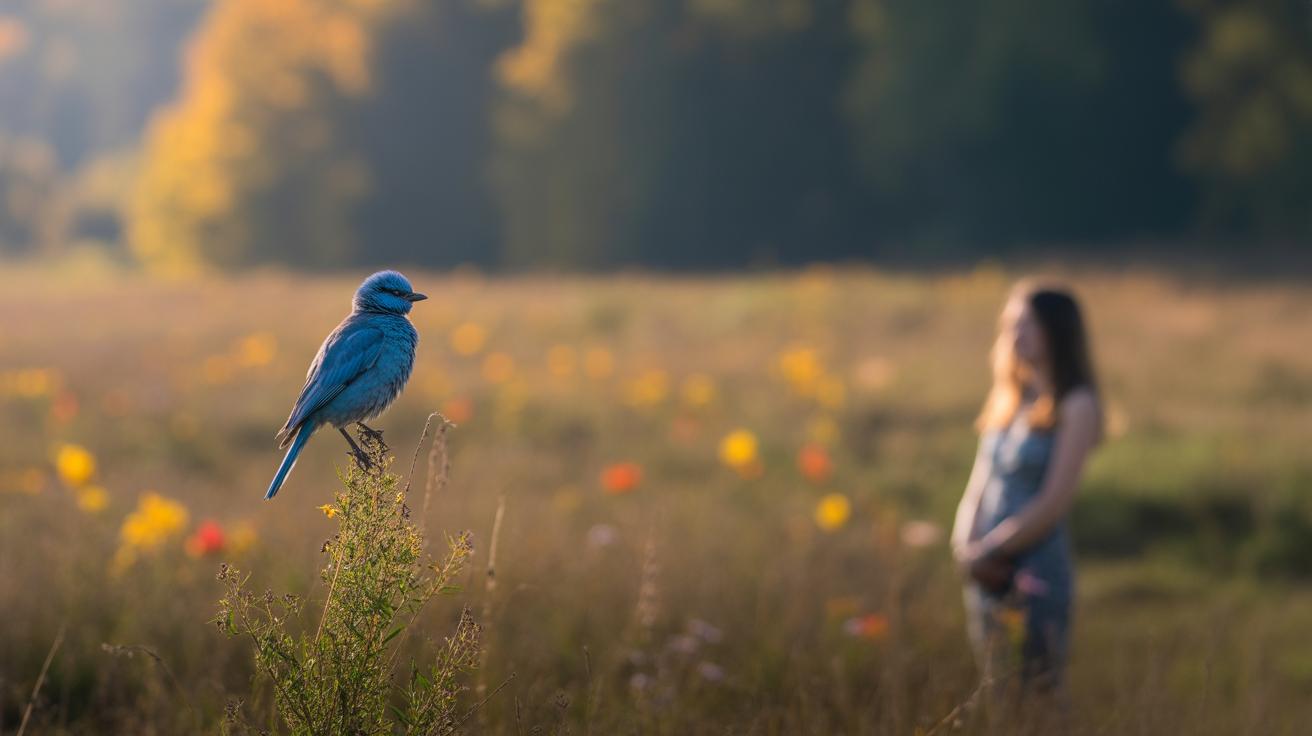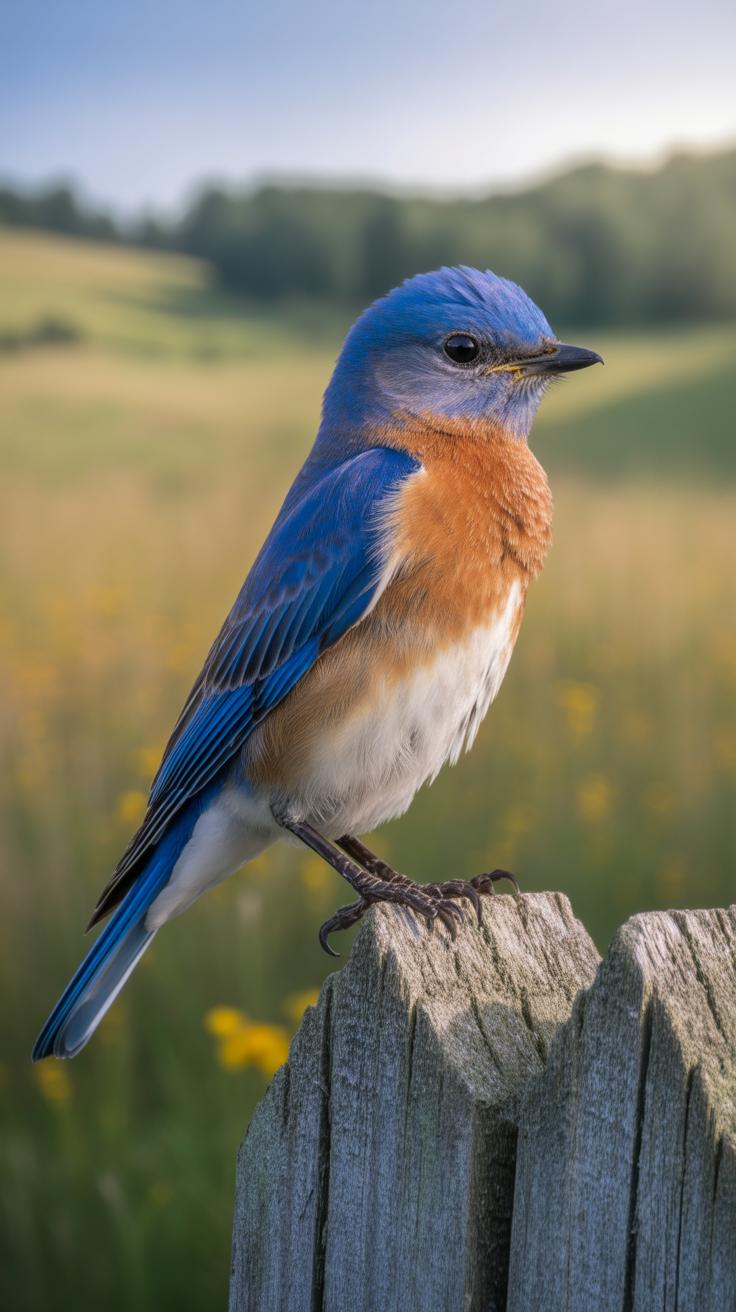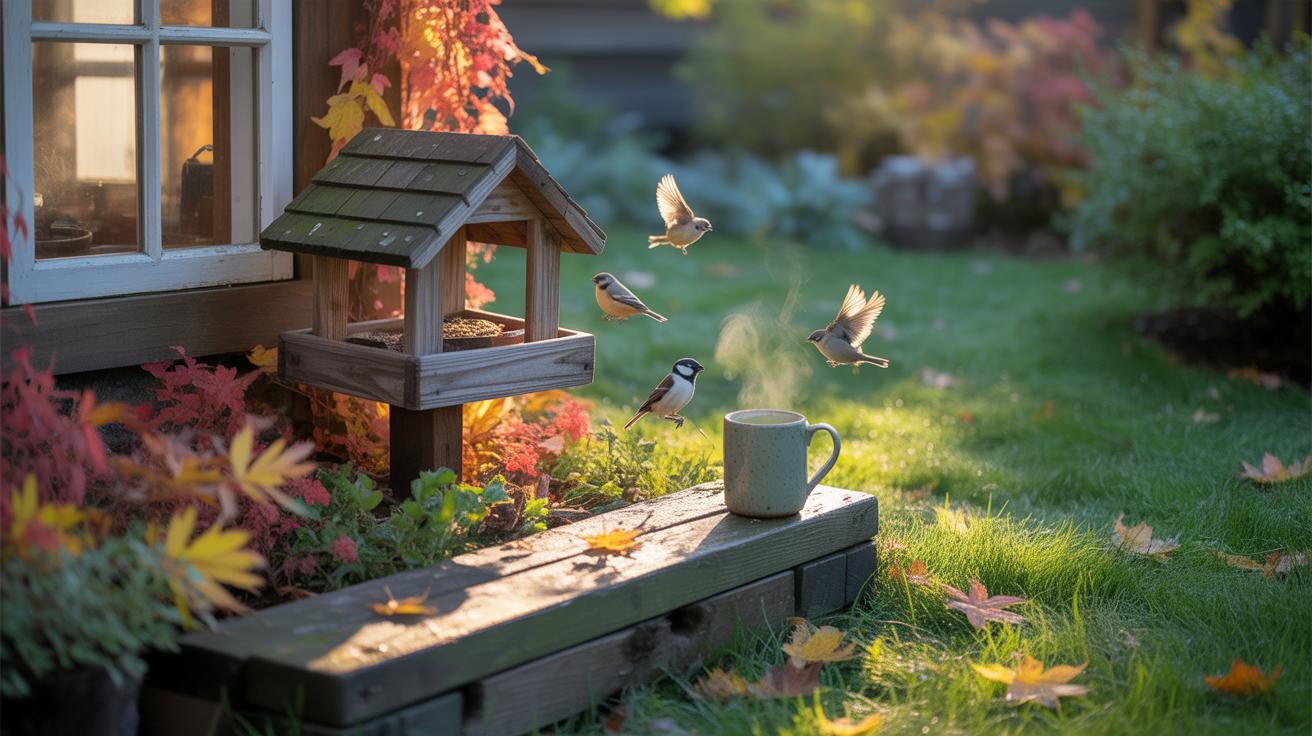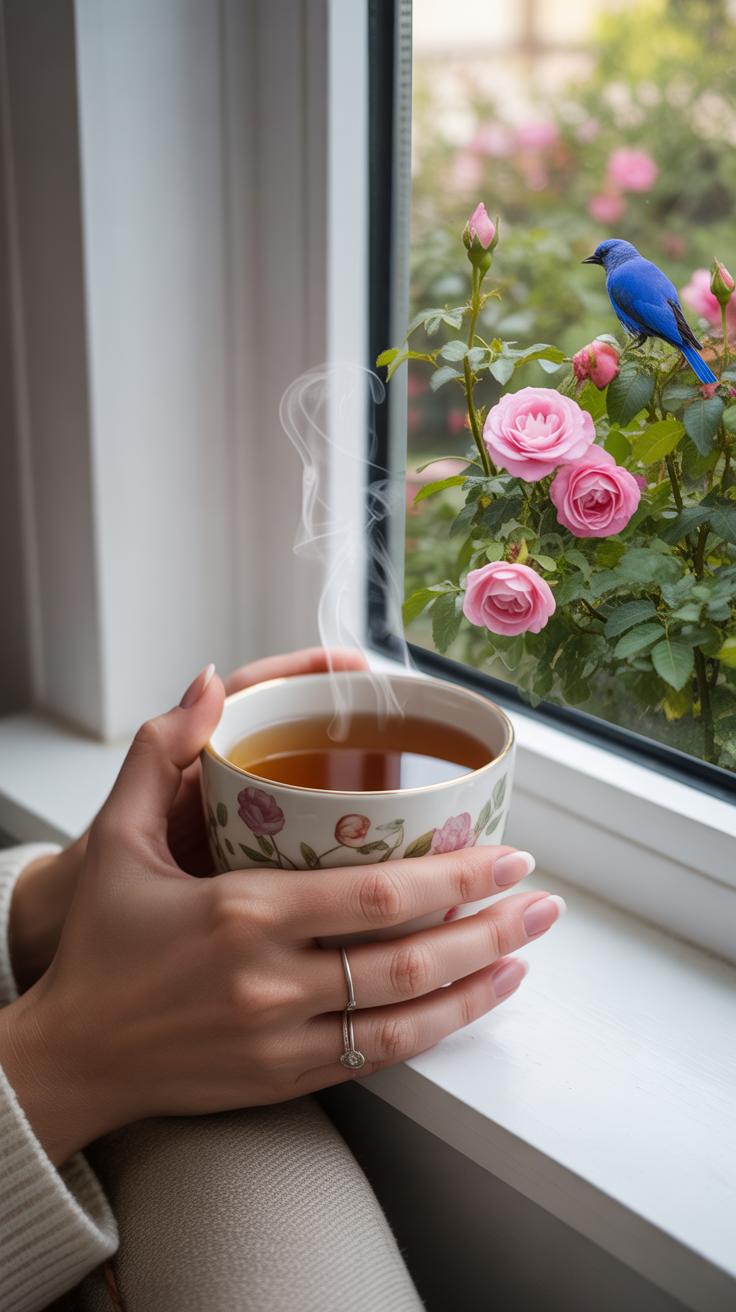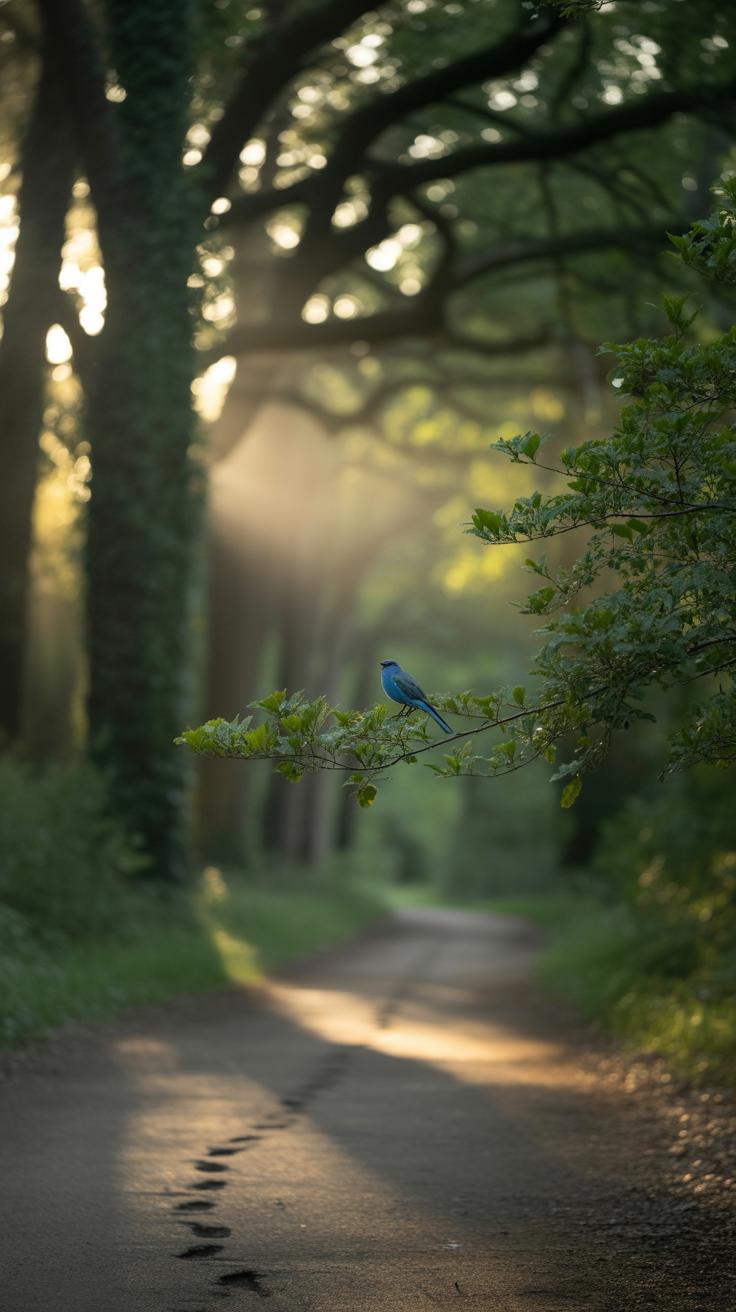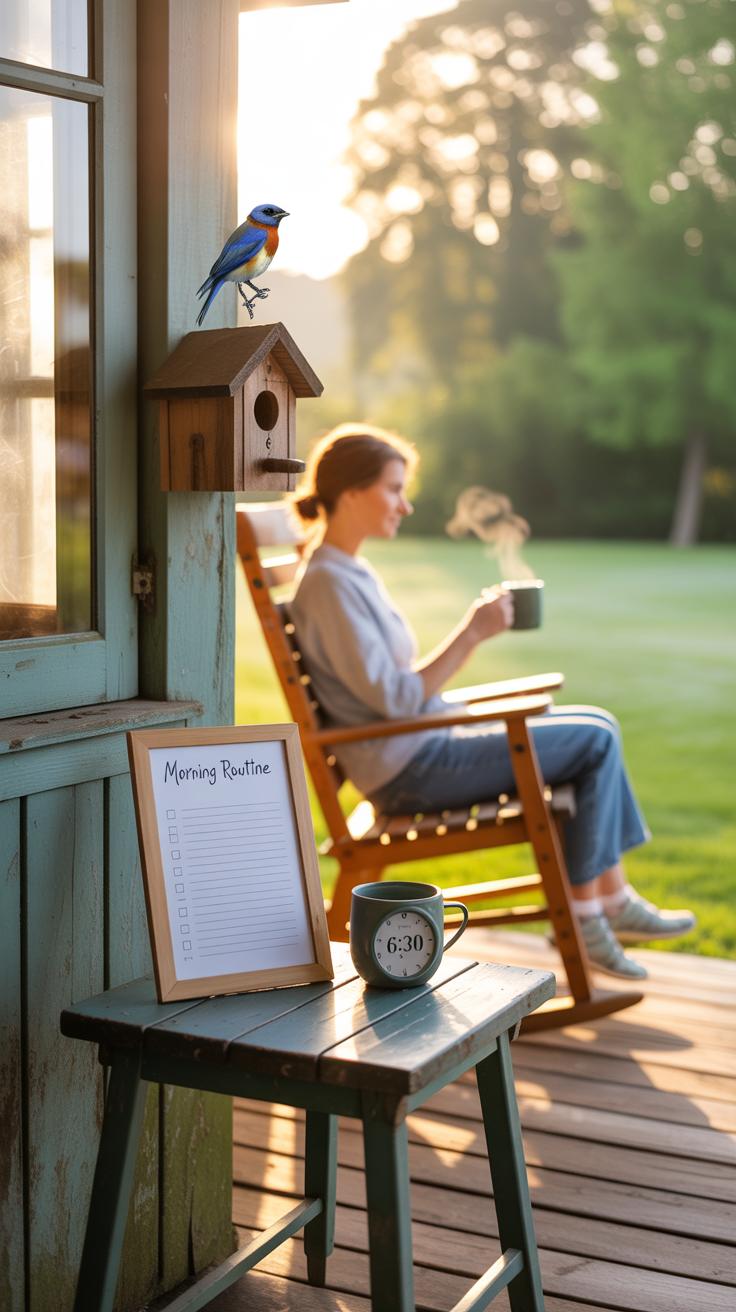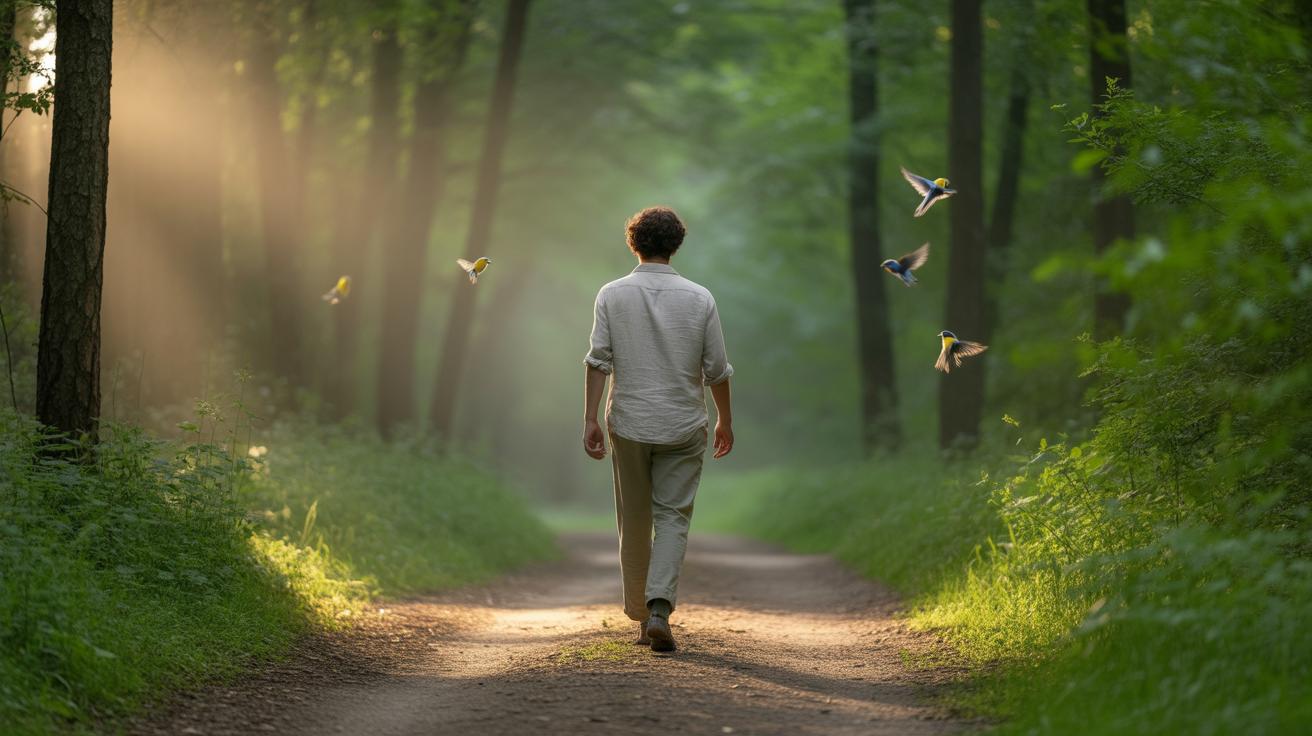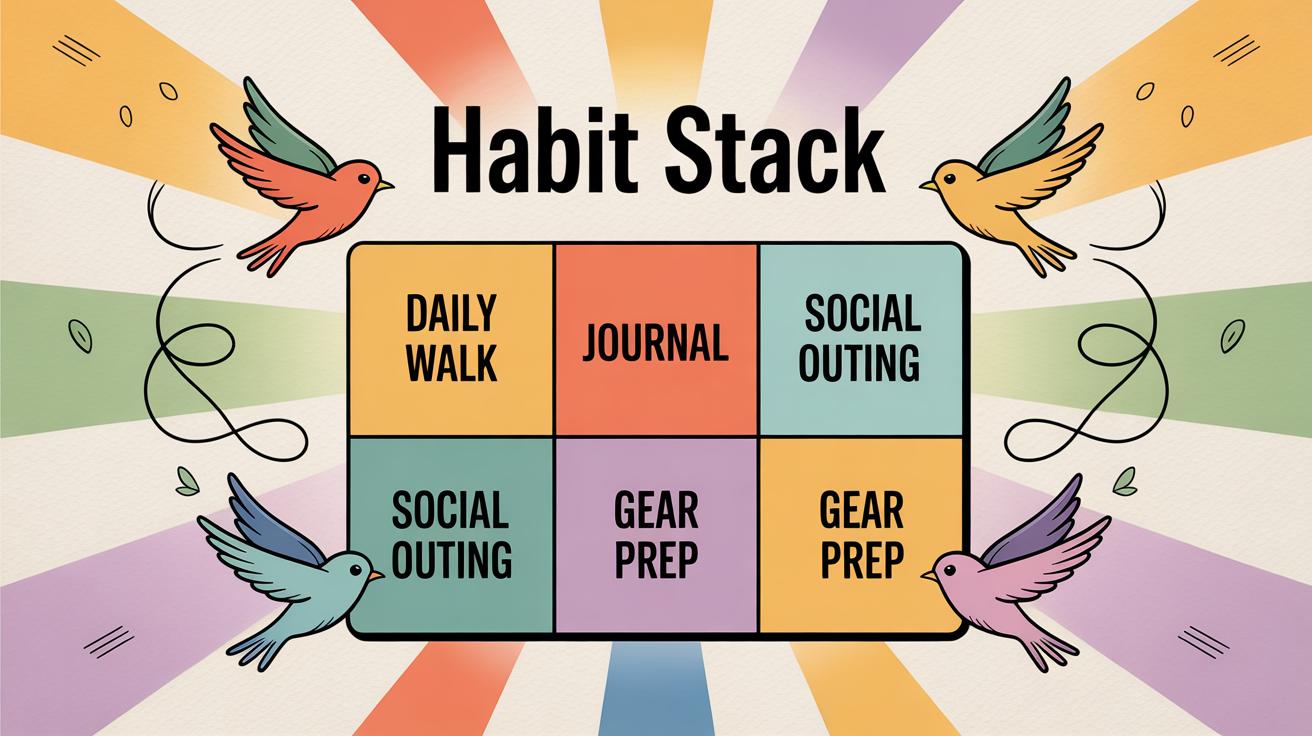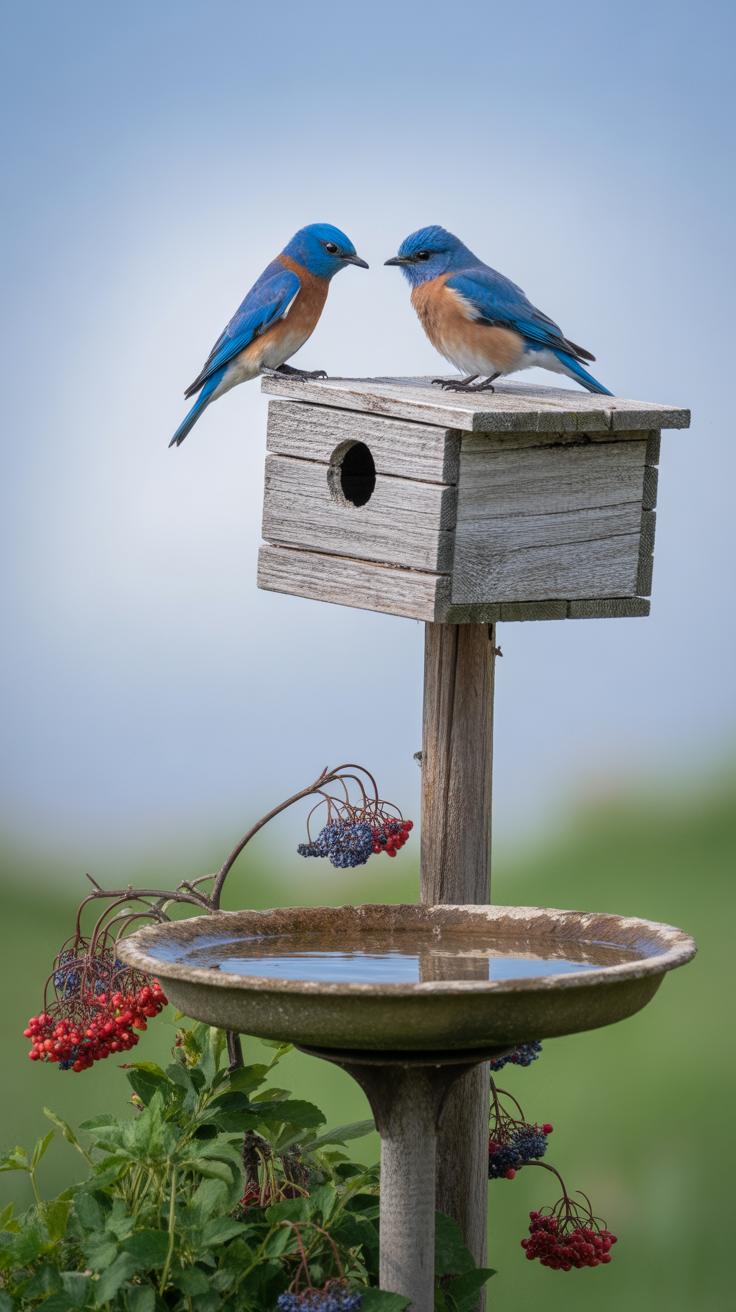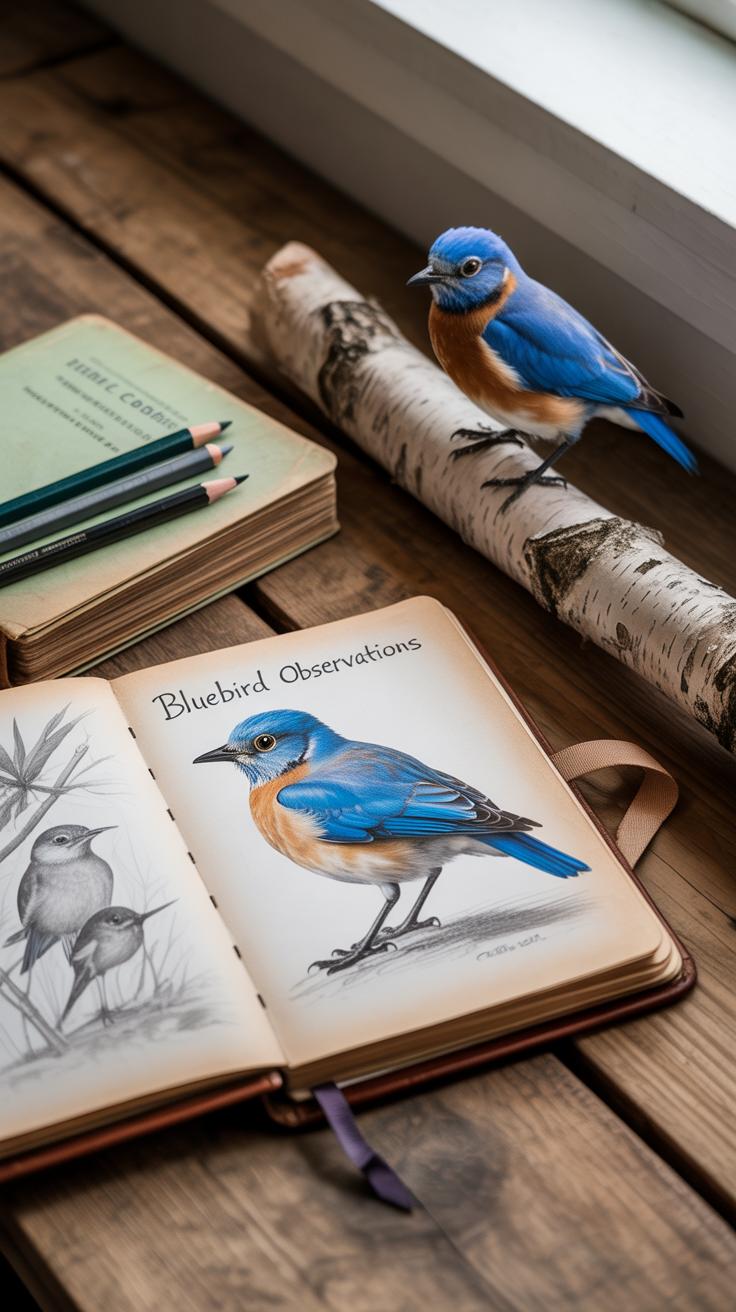Introduction
Spending time in nature and observing creatures like blue birds can bring a surprising boost to your mood. Blue birds, with their gentle presence and vibrant colors, often catch the eye of many bird watchers and nature enthusiasts. These encounters offer more than just visual delight – they can improve emotional well-being and provide moments of peace and calm.
This article explores how seeing blue birds can positively affect your emotional state. We will learn about their role in lifting spirits and quieting a busy mind, helping you find calm during hectic days. Understanding these benefits encourages you to take time for simple, peaceful moments in your daily life, reconnecting with nature.
What Are Blue Birds
Blue birds belong mainly to the genus Sialia, a small group of thrushes known for their striking blue feathers. These birds are easily recognized by the vibrant shades of blue on their backs and wings, often contrasted with rusty or white underparts. You might notice their colors shining as the light catches their feathers, especially during a quiet morning.
Three key species stand out: the Eastern Bluebird, Western Bluebird, and Mountain Bluebird. They share common traits but each has subtle differences in color intensity and pattern. Blue birds typically nest in open woodlands, farmlands, and sometimes suburban areas—places where they can find both insects and safe spots for nesting cavities. It’s interesting how their presence often signals a balanced, healthy ecosystem.
Types of Blue Birds
Here are the three blue birds most people spot in North America:
- Eastern Bluebird: This species sports a bright, almost royal blue back and a reddish-orange chest. They are quite common in the eastern U.S. and often seen perched on fence posts.
- Western Bluebird: Similar in size, but their blue is deeper and accompanied by a rusty orange throat and chest. They tend to hang out in oak woodlands and at higher elevations.
- Mountain Bluebird: Paler than the others with an almost sky-blue body, including the belly. Mountains and open meadows are their favorite homes, often above the tree line.
Each type adapts slightly to their environment and diet, but spotting any of them can feel special, as if a flash of calm has landed nearby.
Where Blue Birds Live
Blue birds thrive where open spaces meet trees or shrubs. You might find them in:
- Farmlands and pastures with scattered trees
- Woodland edges and clearings
- Mountainous regions or foothills, depending on species
- Suburban yards that provide nest boxes or natural cavities
Trying to spot blue birds at dawn or dusk increases your chances—they’re often hunting for insects or returning to a nest. If you put out a nesting box in your yard, you might even entice them close enough to watch their delicate flights. I remember the quiet thrill when one first appeared on the branch just outside my window—it’s a moment you don’t easily forget.
How Looking at Blue Birds Can Improve Your Mood
Spending time watching blue birds can feel surprisingly uplifting. When you stop to observe those flashes of blue darting through branches, your mind often shifts—even if just a little. It’s simple, quiet, yet somehow refreshing. This kind of birdwatching can ease sadness and invite moments of happiness.
Studies suggest that watching nature triggers the release of feel-good chemicals in your brain, like serotonin and dopamine. These are the little messengers that nudge you toward feeling better. Blue birds, with their gentle movements and bright colors, seem especially good at catching your eye and holding your attention long enough to spark this effect.
Think about those times you caught a glimpse of a bluebird unexpectedly. Maybe you paused your walk, smiled without quite understanding why, and felt your tension loosen slightly. One woman I know felt overwhelmed by her day but said watching a bluebird hopping nearby helped her breathe more deeply and feel calmer, if only for a moment.
Could simply being present with a blue bird be a small way to lift your mood? It’s fascinating how such a brief encounter can ripple through your emotions, sometimes catching you by surprise.
Ways Blue Birds Help Quiet Your Mind
Watching blue birds can slow the constant chatter in your head, if only for a little while. Their calm, deliberate movements invite your mind to follow at a gentler pace. Maybe it’s their soft blue feathers or the way they pause between flights—it draws you in, encouraging stillness. When your thoughts race, focusing on a blue bird sitting quietly on a branch can be grounding. The momentary distraction from stress is real, even if subtle.
Nature has this odd ability to mute mental noise. Blue birds are part of that natural world that doesn’t demand anything from you but asks you to simply be present. You might find yourself breathing easier without realizing it. It’s not just about the bird swirling through the air, but about the space it creates inside your mind.
Mindfulness means paying deliberate attention to the present moment, and blue birds can be a gentle aid for that practice. Following their movements, noticing the pattern of their calls, or even the slight tilt of their heads can help slow the mind. This simple, direct observation steers you away from worries and plunges you into a focused awareness—like pressing pause on a busy day. It’s surprisingly calming, though sometimes, your mind may wander back before you realize it. That’s okay—mindfulness isn’t about perfection, but about returning to the present, again and again.
Where and How to Spot Blue Birds Easily
Finding blue birds might feel tricky at first, but with a bit of patience, you’ll start noticing them more often than you’d expect. Timing matters. Early mornings and late afternoons tend to be when these birds are most active, especially during spring and summer when they’re busy feeding or nesting.
Look for open woodlands, edges of forests, and well-maintained gardens. Bluebirds favor places where insects are plentiful and where there are scattered trees or shrubs for perching. You might want to try:
- Local parks with native plants – these often attract bluebirds searching for food.
- Community gardens that avoid pesticides and offer bright berries or open ground.
- Meadows or clearings near wooded areas where bluebirds can hunt for insects.
When you’re out, keep quiet. Noise can scare them off before you get a good look. You might even want to wear muted colors, as bright clothes sometimes make birds nervous. Staying still helps; sudden movements can send them flying. Sometimes, it’s about waiting and watching shadows rather than chasing after a flash of blue.
For beginners, a pair of binoculars makes a big difference—you don’t have to get too close. And remember to let your eyes adjust as you scan the trees or bushes. Have you noticed how your attention sharpens after a few minutes? It’s like your mind slows down, tuned to something small but alive.
The Role of Blue Birds in Local Ecosystems
Blue birds play a quieter role than you might expect in the ecosystems they inhabit. Their presence affects more than just the human heart. They contribute in ways that ripple through local gardens and woodlands, almost without notice.
Blue Birds as Pest Controllers
If you have a garden, you might appreciate how blue birds help keep insect populations in check. They eat a variety of insects—caterpillars, beetles, spiders—and even some larvae that can damage plants. Imagine how much healthier your plants could be when those pests are reduced naturally.
One afternoon, I watched a bluebird diligently hunting near my porch, picking off tiny insects hiding under leaves. It was almost like a little gardener managing pests without any chemicals involved. You might find the same helpful presence in your garden if you pause long enough to look.
Supporting Plant Life
Blue birds do more than just eat insects. They also contribute to spreading seeds, which helps plants grow in new places. When blue birds eat berries or fruits, some seeds pass through their digestive systems and are deposited elsewhere. This silent seed distribution encourages plant diversity and growth, sometimes in spots you wouldn’t expect.
Have you noticed plants sprouting in odd corners of your yard or near bird feeders? Those could very well be thanks to blue birds and their unwitting role in carrying seeds around. It’s a subtle process but one that quietly supports the greenery around us.
It makes you wonder—how often do we underestimate small creatures like blue birds in shaping the natural world? Their role might be modest, but it’s meaningful in everyday ways.
Using Blue Bird Watching to Build a Daily Relaxation Routine
Setting aside time to watch blue birds can bring a quiet calm to your day, especially if you keep it simple and regular. Even a few minutes in the morning or evening, when light is soft and the world feels slower, can help reduce stress. You don’t need to become a bird expert—just taking a moment to notice their colors, songs, or flight patterns can draw your attention away from worries.
Try making it part of a gentle habit. Maybe sit near a window where blue birds often appear or take a short walk in a local park where they visit. Even five or ten minutes is enough to shift your mood—sometimes that’s surprisingly powerful.
Setting Aside Time for Nature
It might feel hard to carve out moments, but nature has a way of slowing down the mind. A quick pause outside to watch a few blue birds can refresh your senses in a way screens or indoor spaces rarely do. You don’t have to aim for long sessions, just consistent small breaks. This might mean standing quietly by a feeder after breakfast, or stepping outside before bed to listen and watch.
That break, even brief, can reset your mental state better than a coffee or scrolling on your phone. Sometimes, a few minutes are enough to notice the world beyond your to-do list.
Combining Birdwatching with Other Relaxation Practices
Pairing blue bird watching with breathing exercises or slow, mindful walking can deepen the relaxation. For example, try inhaling deeply for a count of four as you watch a bird perch, then exhale slowly while following its movements. You might find this anchors your attention and eases tension.
Walking gently while scanning for blue birds keeps your body moving without rushing. It’s like a quiet meditation in motion, encouraging both body and mind to unwind. It doesn’t have to be a big commitment, just a few moments where you tune into nature and your breath together can change how you feel. Have you tried linking small habits like this before? It’s worth a shot and might surprise you with how much it helps.
How to Create a Blue Bird Friendly Garden
If you want to invite blue birds into your garden or balcony, you’ll need more than just good intentions. It’s about creating a space that meets their basic needs and fits their natural habits. You might think any outdoor space would do, but blue birds are somewhat picky about where they settle.
Start by planting native shrubs and trees. These provide natural food and perching spots. Blue birds like plants that produce berries, since those offer a steady food supply. Try serviceberry, dogwood, or elderberry if you can. Also, don’t forget flowering plants like coneflowers and black-eyed Susans—they attract insects, which blue birds eat too.
Offering food directly helps, especially during harsher seasons. You can use mealworms, either dried or live, a favorite treat. Sunflower seeds and suet will attract them, but make sure feeders are outside of easy reach of squirrels and larger birds.
Water is essential, but blue birds need safe, shallow drinking and bathing spots. A birdbath with sloping sides or a small fountain works well. Keep the water clean and refreshed. Shelter is just as important. Blue birds nest in cavities, so you might want to put up a blue bird house or install nest boxes in quiet corners. Avoid places with strong winds or direct midday sun—these scare them off.
Try to keep pets away and avoid using pesticides; you want your garden to be a safe place, not just a pretty one. You might find it takes a little time for blue birds to discover your efforts, but when they do, those visits can bring unexpectedly peaceful moments.
Learning Through Blue Bird Observation
Understanding Bird Behavior
Watching blue birds closely reveals more than just their striking color. You begin to notice little behaviors—a quick tilt of the head, the way they flick their tail, or how they choose which branch to land on. These small actions hint at survival strategies, like locating insects or avoiding predators. Observing their nesting routine can be surprisingly detailed: how they gather materials, the care they take arranging their nests, even the timing of feeding their chicks. It’s like piecing together a quiet story of their lives, unfolding bit by bit if you pay enough attention.
These moments encourage you to wonder: what else is going on beneath the surface that you can’t see? Their movements teach subtle lessons about adaptation and resilience, lessons that don’t demand words but hold meaning if you watch long enough.
Building Patience and Focus
This isn’t about rushing. Watching blue birds calls for quiet waiting, sometimes for minutes that feel like hours. It demands that you still your mind, slow your breathing, and resist the urge to fidget. You might catch yourself glancing around or tapping your foot, but the longer you hold your focus, the more details emerge. Gradually, your patience grows. And that waiting becomes a practice in itself—something that spills over into other parts of life.
Focus sharpens as you notice tiny wing flicks or subtle changes in their calls. It’s not always easy. You might feel restless or distracted—but then a sudden flash of blue lands nearby, rewarding that stillness. That touch of quiet and calm seems to linger after the birds have gone, reminding you that sometimes, the best things come when you wait and simply watch.
Sharing Your Blue Bird Experience With Others
Have you ever noticed how sharing a small moment with someone can deepen the meaning of that moment? Blue bird encounters are like that—they seem simple on their own but gain something extra when told to others. Talking about your sightings, even the subtle or fleeting ones, invites others into your experience. It’s less about having a perfect story and more about connecting through something beautiful and unexpected.
When you share your blue bird stories, you might try a few things:
- Show photos, even if they’re blurry—that imperfect snapshot often sparks better conversations than a perfect one.
- Describe the moment—the sounds, the light, the feeling, no matter how trivial it seems.
- Ask friends if they’ve seen blue birds too, opening space for their stories or questions.
Sometimes, just mentioning a blue bird can shift how someone views a regular day. It’s curious how a single image or memory can start a ripple of interest or even joy.
Joining a birdwatching group—whether local or online—creates a community where you can swap experiences and learn. These groups often welcome both beginners and seasoned watchers, making it easier to ask “simple” questions or share moments without any pressure.
Plus, hearing diverse perspectives might alter how you see blue birds. Maybe someone notices a behavior you missed or wonders about a species’ habits. That exchange keeps your own experience fresh and less isolated.
So, why keep those blue bird moments to yourself? Sharing not only spreads joy but knits people together over something quietly wonderful.
Conclusions
Blue bird encounters offer more than just beauty; they provide comfort and a way to ease mental stress. Watching these birds invites you to pause, breathe, and enjoy a peaceful moment. You might notice a gentle shift in your emotions as your mood brightens and thoughts quiet down.
By seeking out blue birds in your local parks or gardens, you create opportunities for calm and happiness. Remember, it’s not just about the birds themselves but the experience they help you create. When you take time to observe and appreciate them, you cultivate a quiet mind and a lifted spirit that benefit your everyday life.

